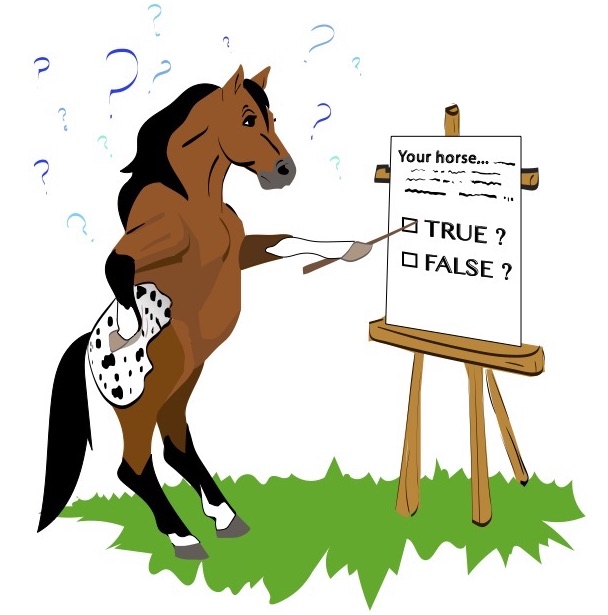
[Wait! Want a quick refresher before you take the Trivia Challenge? Check here for basics on what your horse is ‘saying’ to you.]
1. True or false: If your horse raises his head and neck as you cue him, it means he’s eager to do whatever you’re asking of him.
T / F
2. Your horse goes to the back corner of his stall when you come to halter him. This probably means…
A) he’s looking forward to some exercise.
B) he’s hoping to avoid being ridden.
C) he’s hoping you’re going to feed him.
3. True or false: If your horse starts ignoring a cue he used to respond to, he’s probably telling you he no longer thinks he “has to” obey.
T / F
4. If your horse responds to a cue and then heaves a deep sigh, it most likely means…
A) he’s expressing understanding and/or relief.
B) he’s expressing confusion and/or anger.
C) he has heaves.
HOW’D YOU DO? (Answers below.)
1. F is correct. Your horse’s raised head is actually saying that he’s nervous and bothered. Maybe he’s unsettled by something in his environment (a strange horse nearby?) or perhaps he’s unprepared for what you’re asking of him—he’s not “getting” it. In any event, his adrenaline is flowing, and he’s stopped learning for the moment. [Learn more about how fear short-circuits your horse’s ability to learn.]
2. B is correct. If he normally greets you pleasantly but begins “hiding,” he’s telling you he’s sour about something. You might be putting too much pressure on him in your riding sessions, or perhaps you’ve worked him too hard and made him body sore. Now he feels the way you might on a Monday morning when you can’t face going to a job where you feel overworked and/or under-appreciated. [For more, check out these four surefire ways to make your horse miserable.]
3. T is correct. Assuming pain or discomfort isn’t the issue (always rule that out first), then your horse’s non-response probably means he’s becoming “untrained.” Seek coaching if need be to reaffirm how to be clear, kind, and yet firm in your cueing. [Related: Learn how to troubleshoot lameness.]
4. A is correct. Your sighing horse is most likely processing information and feeling better about it. He’s “getting it” and feeling good about that. [Learn the best ways to reward your horse for correct responses.]
Hey! Not already receiving H&R’s fun and informative newsletter? Sign up for The Ride.






